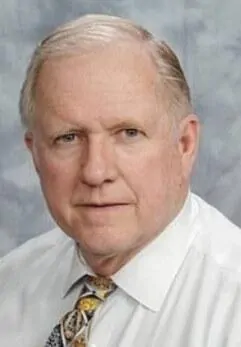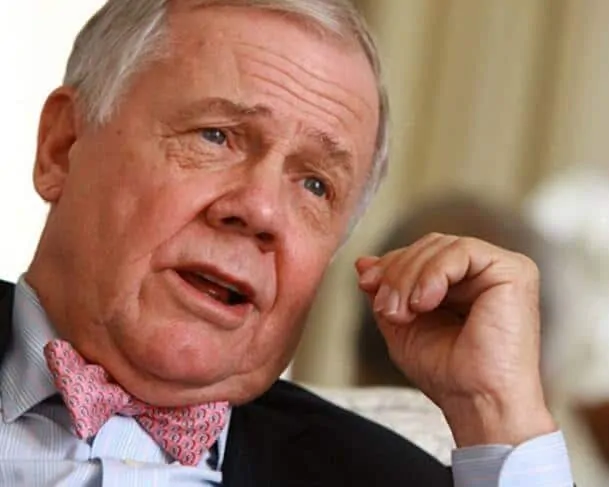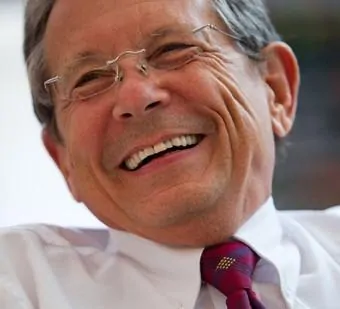Real trader stories. Failures and successes. Part 2
Stories of real traders are required for the evolution of beginners. Reading about achievements and failures of famous traders, beginner traders become motivated and absorb valuable somebody else’s experience. Of course, trader stories do not contain examples of chart analysis. Nevertheless, important things might be found in simple advice.
Read in this article:
- principles of experienced traders;
- failure and success stories in individual trades;
- rules, recommendations and mistakes.
We already wrote one article about stories of real traders. The current article is its second part.
In this article, we will tell you some stories about traders and investors, who achieved success and became famous due to their achievements, books or trading systems.
Ed Seykota
The success story of a trader Ed Seykota is connected with computers.
Seykota introduced an electronic system for managing the customer funds in the futures markets when he worked in a brokerage firm at the beginning of the 1970s. It was the first commercial computer trading system. Hundreds of the firm agents traded through the system for the total amount of several million dollars.
The system was profitable but the firm management interfered with its operation all the time, that is why Seykota started to think about working independently. Moreover, the firm management wanted Seykota to readjust the system so that it could send more signals to the customers. It was a brokerage firm and an increase in a number of trades increased commissions and, consequently, the firm’s profit.
But Seykota wanted the system to maximize his own profit, that is why he started to manage the customer accounts independently. For example, he managed to increase one of his customer accounts from USD 5 thousand to USD 15 million in 3.5 years.
Seykota managed approximately 6 accounts in the 1970s and was very reluctant to take more, since the customers seriously influenced his results.
Seykota systems followed the trend. He also used exponential moving averages. Seykota writes that he sometimes violated the system rules, since he considered himself to be smarter and more experienced. However, as a rule, such behaviour resulted in nothing good.
Three basic elements in trading:
- analysis of a long-term tendency;
- analysis of the current graphical model;
- selection of a good moment for a trade.
Speaking about his biggest mistakes, Ed places emphasis on his special adherence to silver positions. He increased protective stops and made losses so often that he had to get through hypnosis in order to get rid of the ‘silver addiction’.
Ed is sure that a trader may become successful only if he is able to cut out losses. Seykota traded more actively after successful trades and less actively after unsuccessful ones.
Jim Rogers
We already wrote about Jim Rogers in the first part of the article, but very briefly. Now we will add some more facts to the story of this famous trader.
Jim Rogers entered the stock market with USD 600 in 1968 and founded the Quantum fund together with George Soros in 1973. Rogers didn’t consider himself to be a trader, since he held some positions for years. He believed that he rather was an investor, since he was able to wait for the right moment.
Jim built his trades on fundamental factors and studied charts to keep track of developments.
He made the biggest profit in trades against the market hysteria. Rogers started to trade when he studied in Oxford. The bullish market helped him to make money.
After Oxford and two years in the Army, he got the job on Wall Street as a junior analyst on machine-building company stocks. Roger invested money in stocks and bonds and also bought options (what options are). Later, he ceased to buy options, he just sold them.
Jim invested all his free money in trading and his wife left him because he didn’t want to buy anything for everyday life right now. He wanted to make money and only then to buy something.
He didn’t have loss-making years since September 1970. Rogers left the Quantum fund in 1980. He was tired of doing one and the same all the time and he had made so much money that it didn’t motivate him any more.
Rogers recommends trading against Central Banks. If Central Banks want to support some currency – sell it.
Basic trading principles:
- buy ‘value’. If you bought something valuable, you cannot lose everything;
- wait for a catalyst, which would change the market direction;
- play against hysteria and take into account fundamental factors. It is a dangerous strategy where you may lose everything. For example, Rogers sold gold at USD 675 and it grew during 4 days up to USD 875 and only then started to move down, while Rogers held short positions despite the losses;
- do not jump into any trade – be patient and selective;
- be flexible and trade in different markets in different times;
- be able to hold both profitable and loss-making positions if you are sure in the quality of your forecast.
Larry Williams
The success story of a trader Larry Williams in the 1987 contest is well-known but only a few know how it happened.
Taking part in the 1987 derivatives trading contest, Larry Williams reached the yield of 11,376% during one year on a real trading account. He increased the account from USD 10,000 to USD 1,114,607. This record hasn’t been surpassed till now. That is why, we will tell you about how Larry traded in that contest instead of how ‘boring’ his everyday life was!
Williams hadn’t been seriously considered as a trader before the contest. They thought he wrote books and conducted seminars but didn’t trade himself. Larry himself believed that it would be an excellent result to increase the account from USD 10,000 to USD 100,000.
He traded in accordance with his own system, which was based on breaks of volatility. Larry wrote that if the price broke some level, for example, the previous day’s high, it continued to grow further. Williams applied namely this approach in trading.
The beginning of the contest trading was unlucky for Williams who was in the red zone after 10 trades. However, the account passed the mark of USD 100,000 in March and Larry increased the position size to 20-30 lots. He traded S&P 500 bonds and futures.
The Williams’ trading account increased up to USD 872,000 in April after closing a profitable trade with 105 lots. The account approached one million in only 20 days.
However, the account decreased nearly twice in May and Larry was forced to decrease the lot amount to 50. He returned nearly all his losses by the end of June trading in various markets – coffee futures, currency pairs, gold and other derivatives.
He lost USD 360,00 again in July in a trade with 237 lots in the bond (what bonds are) market. However, Larry didn’t give up. His trading account reached one million in August.
Larry increased the working volume to 400 lots in the bond market in September. Such big orders could result in problems with execution at the best prices, that is why Williams had to go to Chicago and reach an agreement with the traders in the ‘pit’. The Larry’s trading account increased up to USD 2,042,967 that month.
They recommended Williams to stop trading and register the profit twice during the contest. The first time in June, when his account reached 1 million and the second time – in September. But he didn’t want to stop.
He lost USD 800,000 in two trades in October. Trading was carried out automatically from the office, while Larry himself was on safari in Kenya. He caught malaria 2 days later, which became a bigger concern for him than his losses.
Williams traded until December 31 and finished the contest with a record-breaking amount of more than USD 1.1 million. He never took part in contests since then.
However, his daughter Michelle Williams took part in the contest on the tenth anniversary when she was 16. At that time, she signed a filming contract and she just physically wasn’t able to do all things at a time and decided to quit in 4-5 months. Her trading account increased by 1,000%. However, many traders didn’t believe that Michelle traded herself.
Alexander Elder
Alexander Elder ran from the USSR to the US through Africa. He had USD 25 only. He settled down in New York and started to work as a psychiatrist. Namely this profession helped him in the trader’s career.
Alexander writes books and works as a trainer. He is best known for his ‘triple screen’ trading system. He described it for the first time in 1986, while he himself used it in trading since 1985. The system includes both trend and counter-trend tactics. In fact, these are different time-frame filters for each trade.
- First screen: a trader analyzes a long-term time-frame in order to identify the main trend. Elder uses the MACD indicator slope in the original system to do it. One should trade only in the direction of the main trend, which was identified on the first screen.
- Second screen: a trader looks for a rollback wave against the main trend on a smaller time-frame. Elder recommends using oscillators here – somewhat like Stochastic.
- Third screen: a trader identifies a position entry point with the help of the third screen.
John Templeton
Templeton is considered to be a pioneer of investing. He founded one of the most successful investment funds in 1954 and sold it in 1992 for USD 440 million. The fund showed annual profitability of about 15% during 38 years. Apart from operations in the American markets, the fund invested in foreign markets, for example, Chinese and Korean companies.
He was created a Knight Bachelor by Queen Elizabeth in 1987.
When John studied in Yale, he played poker with well-to-do people and listened to their debates about investments. They played for fun and Templeton played poker to make a living. It was the time when he decided to become someone like a financial consultant (in modern terms). He started his career in 1937 when only 17 persons were engaged in similar activity.
He usually thought outside of the box. For example, he asked his broker to invest USD 100 into each of the stocks of 104 American companies in 1939. All the stocks were traded less than USD 1 each. 37 of them were on the brink of bankruptcy but he bought them anyway. Templeton was only 27 years old and Europe was on the eve of World War II. He was sure that the American industry would rise during the war, that is why he borrowed USD 10 thousand and also invested it.
He closed these investments in 5 years with the profit made on 100 companies and his investments increased 5 times.
He recommends beginner traders to be humble and not haughty. Templeton was famous among his employees for being extremely sparing. For example, he made notes on scratched paper.
Peter Lynch
Peter Lynch was the Fidelity Magellan fund manager from 1977 until 1990 and the fund assets grew during this period from USD 22 million to USD 14 billion. The fund managed to exceed the S&P 500 index profitability 11 out of 13 years. The Lynch fund profitability was about 29% during those years.
Peter Lynch invested for long periods taking into account fundamental factors. He preferred to buy good businesses, which he understood.
He believed that individual investors had an advantage since they are free in their choice. His most famous investment principle is ‘invest in what you know’. He believed that small and developing companies are interesting from the investment point of view as much as big and developed companies are. However, there is a lack of growing companies nowadays, that is why Lynch recommends to also consider cyclic companies.
Besides, Lynch believed that every investor has a field he understands. For example, an investor works in a car dealership, which means he knows about cars. Such an investor can use his knowledge for selecting companies and for fundamental analysis and focus on what he knows well.
Lynch recommends conducting a mandatory fundamental analysis and comparing financial coefficients.
Benjamin Graham
Graham was born in England in 1894 and his family moved to America when he was 1 year old. He founded an investment partnership with Jerome Newman when he was 31. Data about the fund profitability are available from 1936 until 1957, when it was 14.7% exceeding the S&P profitability by 2.5%. Some sources specify even a higher Graham fund profitability – 17%.
He described the investment principles in detail in his book ‘The Intelligent Investor’. Later, these principles were named ‘value investing’. Warren Buffett is committed to these principles. The idea of value investing is to select undervalued companies and keep them in the portfolio. He invented a characteristic, which is called a ‘margin of safety’ and means the difference between the price of buying and internal value of an asset. Graham believed that the market prices were not always fair.
Graham formulated the main ideas in the 1930s. He recommended to keep 75% of the portfolio in stocks when they are undervalued and reduce their amount to 25% when they are overvalued. He writes that investors should stay away from the companies with P/E>25. Attractive companies have the following characteristics:
- P/E<15;
- P/B<1.5.
The main question modern investors ask themselves is whether his ideas could still be applied or they are outdated.
There is no simple answer to this question, since the markets changed significantly after the emergence of electronic trading and globalization. However, the basic Graham’s ideas could be used for selecting companies in the course of a fundamental analysis. He paid a lot of attention to the investor behaviour, although he died 4 years after emergence of what we call today behavioural finance.










